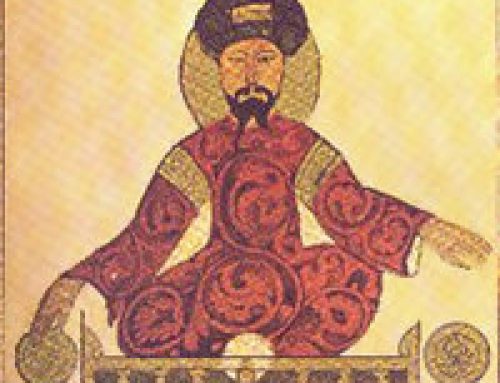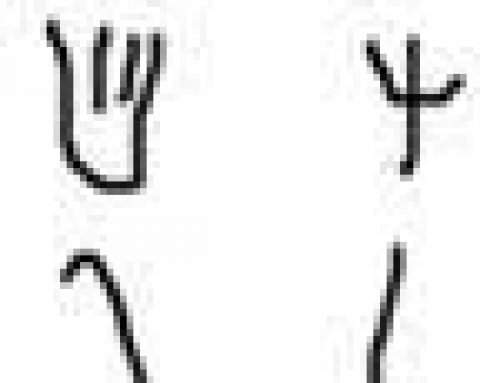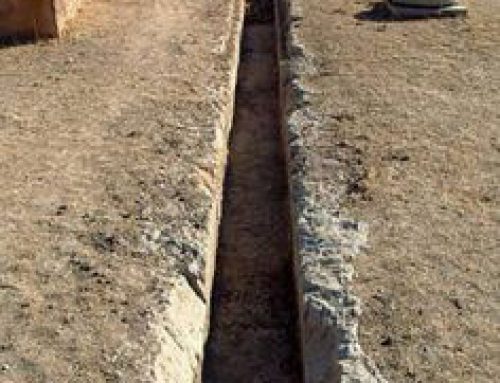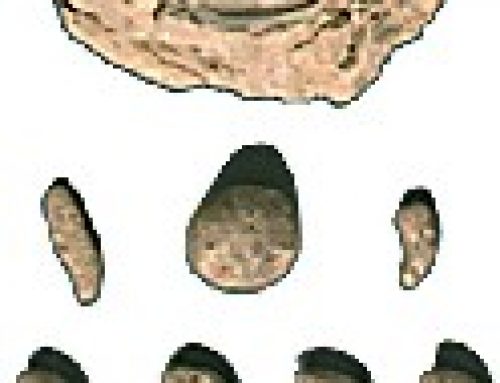
Clay tablets with cuneiform writing of the Enuma Elish
Story of Creation
By about the time of Hammurabi, about 1700 BC, people in the Babylonian Empire were beginning to write down this story about the creation of the world.
Hammurabi of Babylon
Mesopotamian religion
West Asian cuneiform
All our West Asia articles
The name, Enuma Elish, comes from the first two words of the poem, which mean “when on high”. This is a Babylonian story, which also explains how the Babylonian gods came to rule over earlier Sumerian gods like Enlil. Probably this is just how the Babylonians told it; the Sumerians had a different version.
Who was the god Enlil?
Who were the Sumerians?
The Earth and the Sky get together
The Enuma Elish (eh-NOO-mah eh-LISH) begins when the earth and sky don’t have names yet (think of the beginning of the Christian gospel of John – “in the beginning was the Word”). Apsu, the first god-father, and Tiamat, the first god-mother, who is also chaos, mix their waters together to create a second generation of gods, Ea and his brothers. But these young gods make so much noise playing that Apsu wants to kill them. Tiamat warns her son Ea of the danger, and Ea kills Apsu instead. So Ea becomes the new chief god.
Their grandchild Marduk
With his wife Damkina, Ea has a son, Marduk – the third generation of the gods. Ea and Damkina give young Marduk the wind to play with, but he uses the wind to make tornadoes and dust storms, disturbing his grandmother Tiamat, who is now the Earth/Sky. Marduk’s making his grandmother’s body into dust storms! That’s not okay.
What causes wind really?
What are tornadoes?
Marduk becomes the ruler of the gods
Younger gods, still inside Tiamat’s body, convince Tiamat to take revenge for Ea killing her husband Apsu. Tiamat, with her new husband Kingu, creates monsters (like the Greek Titans) to help her and a great war starts, but in the end Tiamat loses.
Marduk becomes the new king of the gods, over older gods like Enlil. Marduk rips Tiamat’s body into two halves, and one becomes the sky while the other half is the earth. Out of Kingu’s blood, Marduk makes the first men.
Babylonian New Year festival
Babylonian people told this story every year at their great festival of the New Year, in springtime, when the world started out new. We still celebrate big holidays in early spring that are descended from this Babylonian New Year: Passover, Nowruz, and Easter.
Compare this story to the Jewish and Greek and Indian stories of the Creation.
Bibliography and further reading about West Asian religion:
Ancient Mesopotamians, by Elena Gambino (2000). For kids, retellings of Mesopotamian stories and lots of context.
Gods, Goddesses, and Monsters: An Encyclopedia of World Mythology, by Sheila Keenan (2000). Easy reading.
Religion in Ancient Mesopotamia, by Jean Bottero (2001).
God Against the Gods: The History of the War Between Monotheism and Polytheism, by Jonathan Kirsch (2004). From Akhenaten in Egypt, through Judaism and the rise of Christianity. Lively, popular writing.
A World Full of Gods: The Strange Triumph of Christianity, by Keith Hopkins (2001). Entertaining account of what it was really like at non-Christian and early Christian religious events. Not for young kids.




